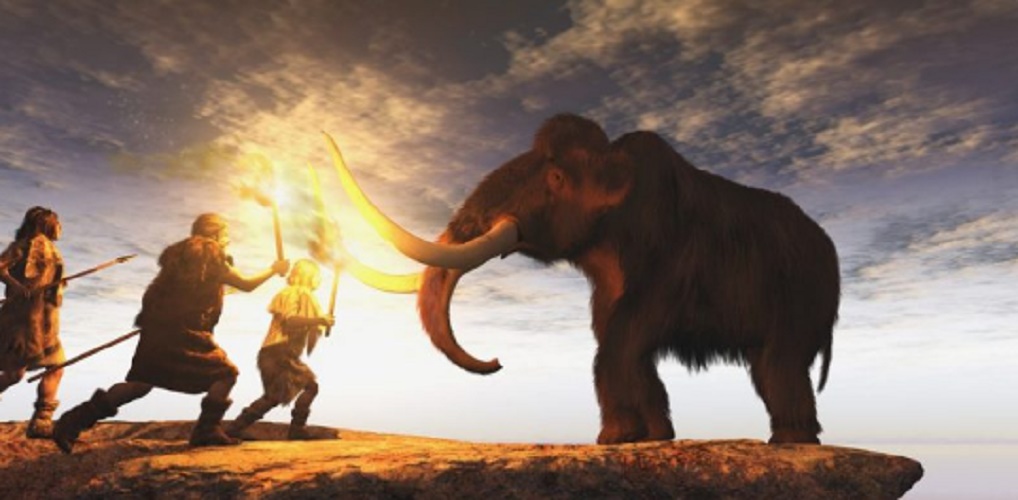What Is Prehistory? Its Periods And Stages, Prehistoric Art And The History
We explain what prehistory is, and the periods and stages in which it is divided. Also, how was prehistoric art, and what is history?
What is prehistory?
Traditionally, we understand by prehistory the period of time that goes from the appearance of the first hominids on Earth, that is to say, the ancestral human species of Homo sapiens, until the appearance of the first complex societies of the latter and, above all, to the invention of writing, an event that occurred first in the Middle East, around 3300 BC.
However, from an academic point of view, the concept of prehistory has been much discussed due to its inaccuracies: the human being did not appear at the same time in all places, nor did he discover the writing at the same time, so it limits Chronological is, at least, arbitrary.
In any case, prehistory can be considered more as a category of work, to organize all those primitive societies whose existence is prior to Ancient History and that lack the minimum conditions with which we understand human civilization, which in general are:
- Complex and hierarchical socialization, with administrative structures and some kind of economic exchange.
- Ability to substantially modify their habitat to make it more conducive.
- Agglomeration of human life in cities and domestication of animals.
The end of prehistory and the beginning of history is thus a matter of debate, since very ancient civilizations such as the Incas and Mexica in America, or in Africa Great Zimbabwe or the Empire of Ghana, or the Khmer of Southeast Asia , used to be considered part of prehistory for not knowing writing, but their eminently urban ways of life and complex societies are more characteristic of ancient history.
Periods and stages of prehistory

Prehistory is understood in various periods, whose chronological inaccuracy forces rather consider as progressive stages in the evolution of human capacities to handle materials and produce tools. Thus, we speak of two great periods:
Stone Age. It is the period during which the human being handled mostly tools made of stone and wood, or simple materials. This stage in turn comprises three periods, which are:
- Paleolithic. It is the longest period of the stone age, which begins with the creation of the first stone tools created by hominids. In her, there were species of extinct human beings, such as Homo habilis or Homo neardenthalensis , which were mainly hunter-gatherers. At the end of this period, Homo sapiens spread across the Earth and began the domestication of the first animals.
- Mesolithic. It corresponds more or less to the end of the last Ice Age, that is, it warmed the warming of the earth to more or less current standards. Humanity remained essentially nomadic, although towards the end of the period the first settlements, and with them, the first cemeteries.
- Neolithic. During this period there is a true technological revolution, based on the invention of agriculture and livestock. Grazing, cultivation, and, therefore, exchange, begin to emerge within communities that, much later, will be the first human populations.
Metal Age. As the name implies, it is a period in which human being conquered the knowledge of metallurgy and the handling of metals, thus building more powerful and versatile tools. The first civilizations and human cultures correspond to this period, which is divided into:
- Copper Age. Copper was the first metal to be used by mankind, first raw and then molten, giving birth to metallurgy, to create more cutting and versatile tools.
- Bronze Age. The knowledge of copper allows its mixing (alloy) with other metals and thus bronze is born, which will mark a milestone in humanity in the manufacture of weapons, shields, ornamental objects, etc. The glass will also be discovered in this period, which gives rise to the first ceremonial ceramics, which were used mostly to receive the ashes of cremated bodies.
- Iron Age. Some of the main ancient civilizations had already appeared for the iron age, and their mastery of this metal demanded and led to new techniques and new methods of material handling, although the popularization of iron would not occur until the Roman Empire had entered into years. .
Prehistoric art

During prehistory the first forms of art or subjective expression of humanity were given, usually consisting of cave paintings on cave walls, using different substances such as paint: blood, animal fat, and certain pigments. Mostly this primitive art consists of shapes of hands, spots, or drawings of animals in hunting scenes.
Later in prehistory, the sculpture would give rise: in stone initially, but then in other more noble materials, such as metals. Ceremonial and religious objects, such as effigies, were common at the time.
At the same time, the first oral stories would be composed and transmitted from generation to generation, probably with mythical or religious content.
The history
History, as opposed to prehistory, refers to the events carried out by humanity since the invention of writing, that is since these events could somehow be registered and preserved for future generations. It is the field of study of social science of the same name.
